fousesquawk
http://garyfouse.blogspot.com
Cross-posted from the Orange County Register
Tonight, PBS is broadcasting a 3-hour program entitled, The Life of Mohammad, hosted by Rageh Omar,
a Somali-born British journalist. Yesterday, Cathleen Falsani wrote the below article advertising the program. The article is entitled, "Five Things I learned About Mohammad". It appears in the paper's Faith and Values section. The text is below.
---------------------------------------------------------------------------------------------------
Falsani: 5 things I learned about Muhammad On Tuesday evening, PBS will air “The Life of Muhammad,” an exceptionally fine documentary series about the life and legacy of the founder of Islam. Hosted by Rageh Omaar, a veteran Somali-born British journalist and war correspondent who is Muslim, the three-hour documentary paints a vivid picture not only of the Prophet Muhammad — who, according to prevailing Islamic custom, cannot be depicted in any fashion — but of the varied understandings of his life, teaching, and legacy. Journalist and author Rageh Omaar, host and narrator of the three-part PBS series, "The Life of Muhammad," which airs Aug. 20 nation-wide. Filmed on location in Saudi Arabia, Israel, Jordan, and elsewhere, the documentary, which was made for the BBC where it aired in 2011, succeeds where predecessors have failed by incorporating sweeping landscapes — physical and spiritual — with a breadth of knowledge from Muslim, Christian and Jewish scholars (more than a dozen by my count, including some of the preeminent names in their fields, including Karen Armstrong and Tariq Ramadan) whose own perspectives run the gamut from orthodox and mystic, to skeptic and even detractor. Divided into three parts — “The Seeker,” “Holy War,” and “Holy Peace” — the film opens inside Omaar’s hotel room where he is preparing for the haj — the pilgrimage to Mecca that is one of the Five Pillars of Islam. Omaar tells us he made his first haj as a boy with his family 30 years earlier. It is this human, personal touch from the host that helps make the documentary all the more compelling. “Like most Muslims, the first human name I heard was not that of my mother or father,” Omaar says, “but of Muhammad.” As is the Islamic custom, shortly after he was born in Somalia in 1967, someone whispered the words of the Shahada — the Muslim statement of faith that says, “There is no God but Allah. Muhammad is his messenger” — into Omaar’s ear. “Fourteen-hundred years ago a man born here, in Mecca, in Saudi Arabia, changed the course of world history,” Omaar says, adding that he wants to explore the “many complexities” of Muhammad’s life and times and how they “still affect today’s world. I want to uncover the real Muhammad.” Robustly researched and beautifully filmed, combined with Omaar’s inviting demeanor and assuring gravitas, “The Life of Muhammad” is well worth watching. It is a vivid corrective to the fear and misinformation that surrounds Islam and its 1.3 billion adherents worldwide. Muslims are no more a monolith than Christians and Jews, and their understanding of their own doctrines and theology are as dynamic as any held by their Christian and Jewish cousins — all monotheistic “People of the Book,” whose stories overlap throughout history and continue to do so today. Most viewers will learn a lot about the Prophet and Islam. And even those of us who have studied Islam likely will walk away with at least a few new gems of information and perspective. Here are a few of mine: 1. Muhammad was an orphan. His father died before he was born, and his mother (who had placed him with a Bedouin wet nurse as an infant and reunited with him several years later) died when he was about 6. He then went to live with a grandfather, who also died, before he finally came under the protection of his uncle, Abu Talib, who would be among Muhammad’s closest companions until his death. Interestingly, while he was an ardent supporter of his nephew, according to the film, and despite Muhammad’s best efforts to persuade him, Abu Talib never converted to Islam. “The most direct, the most unequivocal statement in the Qur’an, is that there is no compulsion in religion — no ifs, ands or buts,” scholar Merryl Wyn Davies, director of London’s Muslim Institute, says in the film. “Unless you make a free, willing choice for faith, you cannot be held accountable for your actions thereafter. That is the essence of what Islam is about.” 2. Muhammad’s first wife, Khadijah, asked him to marry her. When Muhammad was about 25, he agreed to work for Khadijah, a widow who was a successful merchant, accompanying some of her wares on a trade caravan. When he returned, she asked him to marry her. Even today it’s unusual for a woman to ask a man to marry her, but in 7th-century Arabia it would have been absolutely unheard of, according to the film. Muhammad and Khadijah were married for nearly 25 years and together had four daughters. Although polygamy was the custom at the time, Muhammad didn’t take another wife until after Khadijah died. She was the love of his life, according to the film, his first convert and is considered the “mother of Islam.” 3. There are no memorials, statues or even plaques marking Muhammad’s birthplace. Although historians and scholars believe they know precisely where Muhammad was born, in Mecca on June 6, 632 A.D., there are no markers celebrating the site as a sacred or even special place. According to the film, any signs or markers with Muhammad’s name have been removed over the years in an effort to ensure that Muhammad is not worshipped or venerated in any way. Muhammad was not the son of God or divine — he was just a man, a fact that he insisted be made clear in his lifetime and after. Worshipping Muhammad or anyone other than Allah — the one true God — is considered the very worst kind of sin. In accordance with the prevailing tradition in Islam against depicting Muhammad or any of the prophets before him (including Abraham, Moses, and Jesus), the film does not include any dramatic reenactments of Muhammad’s life or any historical artwork that shows the prophet without his face covered by a veil. 4. Muslims haven’t always prayed toward Mecca. Among the many mosques and houses of worship Omaar visits in the film is the Masjid al-Qiblatain (or “Mosque of Two Qiblas”) in Medina, Saudi Arabia. Qibla is the Arabic term for the direction Muslims face when they pray five times daily (another of the Five Pillars of Islam.) The Mosque of Two Qiblas is so named because it has two arched alcoves indicating the direction of prayer — a large one facing in the direction of Mecca and a second, smaller one facing toward Jerusalem. It was in this mosque that, while leading prayer, Muhammad is said to have received a revelation from God telling him to change the direction Muslims faced during prayer. According to the film, in the revelation, God told Muhammad to pray toward Mecca and the Kaaba — the large black cube that the Qur’an (the Muslim holy book) says was built as the first building for humans to worship Allah — rather than Jerusalem, as was the custom among Muhammad’s followers, as well as among Jews and Christians. From that day forward, no matter where they are in the world, Muslims face toward Mecca when they pray. 5. An “Islamic state” probably doesn’t mean what you think it means. One of the most fascinating chapters in the film deals with the so-called “Constitution of Medina,” which is said to have been written by the Prophet Muhammad himself as the basis for the very first Islamic state in Medina. While there are varying historical and religious opinions about who wrote it, when and why — the film does an excellent job presenting various sides of the debate — the document was an agreement between the Muslims in Medina and the pagans, Jews, Christians and others who lived there at the time and made up what Muhammad described as the “ummah” or “community. While “ummah” is often used today to describe an exclusively Muslim community, the film says that’s not what Muhammad intended. In fact, the constitution of the first “Islamic state” defined the rights given to non-Muslims as explicit members of the community, including a statement that said the “security of God” is equal for all groups, and that non-Muslims were not obligated to take part in “religious wars.” One of the scholar-commentators in the film, Bishop Michael Nazir-Ali, the Pakistani-born Anglican bishop of Rochester, England and author of “Islam: A Christian Perspective,” has one of the best lines in the film. Commenting on the Medina constitution, he says, “When people today say to me, ‘We would like to create an Islamic state here or there,‘ I say to them, ‘Will it be like the first one? And if not, why not?” Contact the writer: cfalsani@ocregister.com
----------------------------------------------------------------------------------------
Comment: With all the superlative adjectives, looks like this will be one of the greatest
cinematographic ventures since Technocolor was invented.
I would not expect the Orange County Register to run an article criticizing Islam or
the prophet-even in the editorial section. Yet, at the same time, this article is so
hagiographic in nature as to be historically misleading if not downright false. The timing
could not have been more ironic with over 60 churches in Egypt having been attacked and
burned to the ground-to say nothing of all the other attacks against Christians and
non-Muslim minorities across the Islamic world.
"It is a vivid corrective to the fear and misinformation that surrounds Islam and its 1.3billion adherents worldwide."Really? Tell that to the Coptic Christians in Egypt who are huddled in fear as we speak. Are they somisinformed?“The most direct, the most unequivocal statement in the Qur’an, is that there is nocompulsion in religion — no ifs, ands or buts,” scholar Merryl Wyn Davies, directorof London’s Muslim Institute, says in the film."True, that statement does appear in the Koran, but so do others written later that call it intoquestion. In many parts of the Islamic world, forced conversions are going on even today."Muhammad and Khadijah were married for nearly 25 years and togetherhad four daughters. Although polygamy was the custom at the time, Muhammad didn’t take another wife until after Khadijah died. She was the love of his life, according to the film, his first convert and is considered the “mother of Islam.”Misleading?"While “ummah” is often used today to describe an exclusively Muslim community, the film says that’s not what Muhammad intended. In fact, the constitution of the first “Islamic state” defined the rights given to non-Muslims as explicit members of the community, including athat non-Muslims were not obligated to take part in “religious wars.” Too bad the writer did not go into detail about what the conditions of dhimmitude were, whichstatement that said the “security of God” is equal for all groups, andincludes the part that they must feel subjugated to Islam.This is quite similar to the current textbook controversy in our schools as to how Islam ispresented to our children. Again, in the interests of harmony and the sensitivities of Muslimschoolchildren, I wouldn't expect schools to attack Islam or any other religion.Yet, if it isnecessary to present such a misleading narrative in this area, perhaps, it would be better toleave the subject alone. If we want to be well-informed on this subject, it is certainly possibleto read the Islamic texts, study the complete life of Mohammad, and follow world events.





























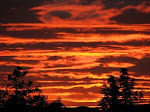.jpg)









.jpg)


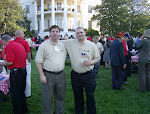

























































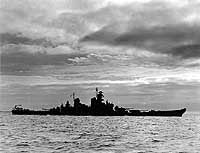





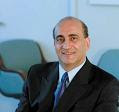

.jpg)

.jpg)











.jpg)
















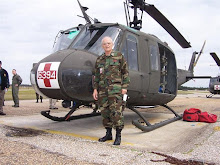


No comments:
Post a Comment